![]()
![]()
Invited Short Talks
(Speakers listed below in name alphabet order)
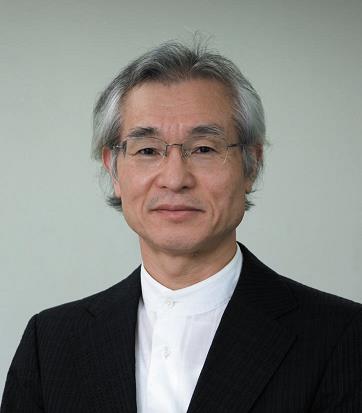
Fumiyuki Adachi
(IEEE/IEICE Fellow)
Distinguished Professor,
Tohoku
University, Japan
Title:
Distributed Antenna Cooperative Signal Transmissions for 5G Network
Time:
16:00-16:30, Wednesday, Feb.
17, 2016
Abstract:
Due to
recent rapid penetration of smart phones into our society, broadband
wireless data services have been getting more and more popular and the
wireless traffic volume has been increasing by about 2 times per year. Since
the available frequency bandwidth is limited, the spectrum efficiency has
been the most important concern for the last few decades. Increasing the
broadband traffic volume increases the energy consumption. Recently, the
energy efficiency has also been attracting a hot attention. How to achieve
simultaneously the spectrum-efficiency and energy-efficiency is a serious
issue towards the realization of 5G networks. A possible solution is to
distribute antennas over macro-cell area instead of centralizing them at
macro-cell base station. Massive MIMO channel is constructed between
distributed antennas and users. Since antennas and users are spatially
distributed, the massive MIMO channel has sparse structure. This sparsity of
MIMO channel can be exploited for signal transmission. In this talk, we will
introduce recent advances in distributed antenna signal processing including
frequency-domain equalization, distributed multi-user MIMO, distributed MIMO
diversity, low peak-to-average power ratio (PAPR) waveform design, etc.
Also, we will discuss about the achievable bit error rate (BER) and
throughput performances.
Biography:
Fumiyuki Adachi received the B.S. and Dr. Eng. degrees in electrical
engineering from Tohoku University, Sendai, Japan, in 1973 and 1984,
respectively. In April 1973, he joined NTT Electrical Communications
Laboratories and conducted various researches on digital cellular mobile
communications. From July 1992 to December 1999, he was with NTT DoCoMo,
where he led a research group on Wideband CDMA for 3G networks. Since
January 2000, he has been with Tohoku University, Sendai, Japan, where he is
a Professor at the Dept. of Communications Engineering, Graduate School of
Engineering. His research interest includes wireless signal processing
including wireless access, equalization, transmit/receive antenna diversity,
adaptive transmission, and channel coding. He is an IEEE Fellow and an IEICE
Fellow. He is a recipient of the IEEE Vehicular Technology Society Avant
Garde Award 2000, IEICE Achievement Award 2002, Thomson Scientific Research
Front Award 2004, Ericsson Telecommunications Award 2008, Telecom System
Technology Award 2010, Prime Minister Invention Award 2010, KDDI Foundation
Excellent Research Award 2012, IEEE VTS Conference Chair Award 2014, and C&C
Prize 2014. He is listed in Highly Cited Researchers 2001 (http://highlycited.com/isihighlycited.htm#table).
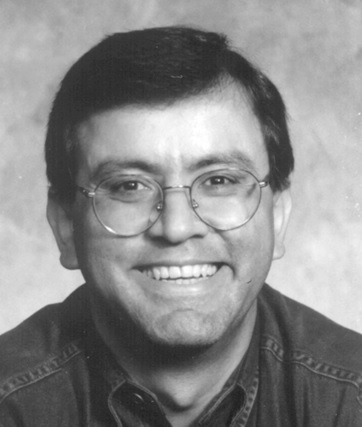
Ender Ayanoglu (IEEE Fellow)
Professor, University of California, Irvine, USA
Title:
5G Today: Modulation Technique Alternatives
Time: 10:30-11:00,
Tuesday, Feb. 16, 2016
Abstract:
Cellular wireless or mobile communications have seen four generations of technological developments. Starting with analog voice with the first, and then moving on to digital voice with the second generation, these generations were each marked with a clear technological advancement. For the third generation, the advancement was in incorporating data on top of a voice-based infrastructure. With the fourth generation, every service was converted into data format, or packetized transmissions, including voice and video. Today, technologists are proposing a fifth generation for around the time frame of 2020. Most consider this time to be when the infrastructure will need to be renewed. Together with this observation, it is usually argued that, the new generation technology should possess a number of features. Yet, there is really no consensus on what these new features should be. Some argue that we are facing a new generation of devices that will have continuous Internet connectivity, and with that there will be more machine to-machine or machine-type communications. It is further argued that, as a result, new communication protocols should be able to support the new formats of communication that this change will require. For example, it is argued that machine-type communication will require very low latency. Others argue that the demand for services will increase by about three orders of magnitude and the new technology should be designed to support this tremendous increase, perhaps handling each order of magnitude by means of a different approach. Yet, there are others who argue that the current communications infrastructure is highly energy-inefficient and the fifth generation should be designed to solve this problem, by increasing energy efficiency by several orders of magnitude. In this talk, we will discuss the pros and cons of the approaches for defining and realizing the fifth generation cellular wireless technologies as seen today. We will discuss what fifth generation can be expected to be and, more importantly, what it cannot be. The goal in this presentation is to form a bridge between the very high expectations and the realities.
Biography:
Ender Ayanoglu received the
M.S. and Ph.D. degrees from Stanford University, Stanford, CA in 1982 and
1986, respectively, in electrical engineering. He was with the
Communications
Systems Research Laboratory, part of AT&T Bell Laboratories, Holmdel, NJ
until 1996, and Bell Labs, Lucent Technologies until 1999. From 1999 until
2002, he was a Systems Architect at Cisco Systems, Inc., San Jose, CA. Since
2002, he has been a Professor in the Department of Electrical Engineering
and Computer Science, University of California, Irvine, Irvine, CA, where he
served as the Director of the Center for Pervasive Communications and
Computing and held the Conexant-Broadcom Endowed Chair during 2002- 2010.
His past accomplishments include invention of the 56K modems,
characterization of wavelength conversion gain in Wavelength Division
Multiplexed (WDM) systems, and diversity coding, a technique for link
failure recovery in communication networks employing erasure coding in 1990,
prior to the publication of the first papers on network coding. During
2000-2001, he served as the founding chair of the IEEE-ISTO Broadband
Wireless Internet Forum (BWIF), an industry standards organization which
developed and built a broadband wireless system employing Orthogonal
Frequency Division Multiplexing (OFDM) and a Medium Access Control (MAC)
algorithm that provides Quality-of-Service (QoS) guarantees. This system is
the precursor of today’s Fourth Generation (4G) cellular wireless systems
such as WiMAX, LTE, and LTEAdvanced.
From 1993 until 2014 Dr. Ayanoglu was an Editor, and since January 2014 is a
Senior Editor of the IEEE Transactions on Communications. He served as the
Editor-in-Chief of the IEEE
Transactions on Communications from 2004 to 2008. From 1990 to 2002, he
served on the Executive Committee of the IEEE Communications Society
Communication Theory Committee,
and from 1999 to 2001, was its Chair. Dr. Ayanoglu is the recipient of the
IEEE Communications Society Stephen O. Rice Prize Paper Award in 1995 and
the IEEE Communications Society Best Tutorial Paper Award in 1997. He has
been an IEEE Fellow since 1998.
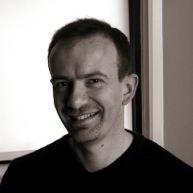
Stefano Basagni
Associate Professor, Northeastern University, USA
Title:
CTP-WUR: The
Collection Tree Protocol in Wake-up Radio WSNs for Critical Applications
Time: 11:00-11:30,
Thursday, Feb. 18, 2016
Abstract:
Allowing the nodes of a wireless sensor network (WSN) to turn their radio off periodically noticeably increases network lifetime. Duty cycling, however, does not eliminate idle listening, comes at the price of longer latencies and obtains lifetimes that are still insufficient for many critical applications. Using a wake-up receiver (WUR) allows actual communications on the main radio only for transmission or reception, virtually eliminating node idling. However, the range of current WUR prototypes is still significantly shorter than that of the main radio, which can challenge the use of existing WSN protocols in WUR-based networks. In this paper we present an approach to mitigate this limitation of wake-up-based networks. In particular, we show that the Collection Tree Protocol (CTP), a standard protocol for data gathering in WSNs, suitably redefined to work on WUR-endowed nodes, achieves lifetimes of several decades. This constitutes a remarkable improvement over duty cycle-based solutions, where CTP makes the network lasts only a handful of months. At the same time, our WUR-based approach obtains data latencies comparable to those obtained by keeping the main radio always on.
Biography:
Stefano Basagni holds a Ph.D. in electrical engineering from the University of Texas at Dallas (December 2001) and a Ph.D. in computer science from the University of Milano, Italy (May 1998). He received his B.Sc. degree in computer science from the University of Pisa, Italy, in 1991. Since Winter 2002 he is an associate professor at the Department of Electrical and Computer Engineering at Northeastern University, in Boston, MA. Dr. Basagni's current research interests concern research and implementation aspects of mobile networks and wireless communications systems, wireless sensor networking (underwater and terrestrial), definition and performance evaluation of network protocols and theoretical and practical aspects of distributed algorithms.
Dr. Basagni has published over seven dozens of highly cited, refereed technical papers and book chapters. His h-index is currently 29. He is also co-editor of three books. Dr. Basagni served as a guest editor of multiple international ACM/IEEE, Wiley and Elsevier journals. He has been the TPC co-chair of international conferences such as ACM Dial M for Mobility (2004), Med Hoc Net (2006), IEEE SECON (2010), IEEE Globecom (AHSN Symposium, 2012), IEEE MASS (2012), IEEE WiMob 2013 and ICNC 2015. Dr. Basagni serves as a member of the editorial board, the organizing committee and of the technical program committee of ACM and IEEE journals and international conferences. He is a senior member of the ACM (including the ACM SIGMOBILE), a senior member of the IEEE (Computer and Communications societies), a member of ASEE (American Society for Engineering Education) and of CUR (Council for Undergraduate Education).
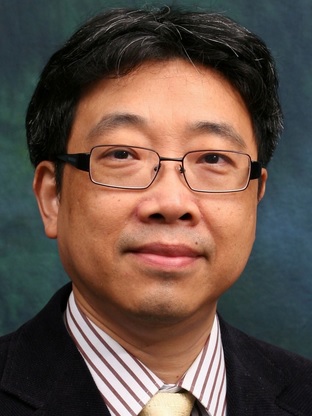
Jiannong Cao (IEEE Fellow)
Department Head and Chair Professor, The Hong Kong
Polytechnic University, China
Title:
Software Defined Vehicle Networks (SDVN): Challenges and
Opportunities
Time: 17:30-18:00,
Tuesday, Feb. 16, 2016
Abstract:
With the advances of telecommunications, more and more devices are connected to the Internet and getting smart. As a promising application scenario of carrier networks, vehicular communication has enabled many traffic related applications. However, the heterogeneity of wireless infrastructures and the inflexibility in protocol deployment hinder the real world application of vehicular communications. Software defined network (SDN) is promising to bridge the gaps through unified network abstraction and programmability. In this talk, I will introduce an SDN based architecture to enable rapid network innovation for vehicular communications. Under this architecture, heterogeneous wireless devices, including vehicles and roadside units are abstracted as SDN switches with unified interface. In addition, network resources, such as bandwidth, spectrum can also be allocated and assigned by the logically centralized control plane, which provides a far more agile configuration capability. Besides, I will also describe several cases to highlight the advantage of the architecture, such as adaptive protocol deployment, and multiple tenants isolation. Finally, I will discuss the research issues and potential future directions in SDVNs.
Biography:
Dr. Cao is currently a chair professor and head of the Department of Computing at Hong Kong Polytechnic University, Hung Hom, Hong Kong. His research interests include parallel and distributed computing, computer networks, mobile and pervasive computing, fault tolerance, and middleware. He has co-authored 4 books, co-edited 9 books, and published over 500 papers in major international journals and conference proceedings. He is a fellow of IEEE, a senior member of China Computer Federation, and a member of ACM. He was the Chair of the Technical Committee on Distributed Computing of IEEE Computer Society from 2012 - 2014. Dr. Cao has served as an associate editor and a member of the editorial boards of many international journals, including ACM Transactions on Sensor Networks, IEEE Transacitons on Computers, IEEE Transactions on Parallel and Distributed Systems, IEEE Networks, Pervasive and Mobile Computing Journal, and Peer-to-Peer Networking and Applications. He has also served as a chair and member of organizing / program committees for many international conferences, including PERCOM, INFOCOM, ICDCS, IPDPS, ICPP, RTSS, DSN, ICNP, SRDS, MASS, PRDC, ICC, GLOBECOM, and WCNC. Dr. Cao received the BSc degree in computer science from Nanjing University, Nanjing, China, and the MSc and the Ph.D degrees in computer science from Washington State University, Pullman, WA, USA.
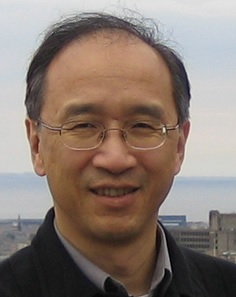
Dah Ming Chiu (IEEE Fellow)
Professor and Chairman, Chinese University of Hong Kong,
China
Title:
Smart Video Streaming Based on User Behavior Analysis
Time: 16:30-17:00,
Tuesday, Feb. 16, 2016
Abstract:
Assuming server bandwidth is the limiting factor, and this bandwidth is charged based on peak load, then a smart bandwidth management strategy (for video streaming) is to apply progressive downloading. Namely, whenever there is extra bandwidth, you let streaming become downloading, to let the streaming users accumulate video content faster than the playback rate, for later consumption. This practice can be significantly improved. For online videos, users tend to browse (rather like channel switching in TV viewing) a lot, and this can lead to downloaded content become wasted. A smart video streaming strategy thus tries to allocate more downloading bandwidth to streaming users who are more likely to continue viewing rather than those who are more likely to quit. This ability can be gained from analyzing user behavior. We describe our work on this topic, including analytical modeling of the situation, as well as experimental results based on real life user behavior traces to demonstrate the benefit of smart video streaming.
Biography:
Dah Ming Chiu received his first degree from Imperial College London and his Ph.D. degree from Harvard University. He worked in industry for several hitech companies of his time: Bell Labs, DEC and Sun Microsystem Labs. He returned to academia in 2002 to become a professor in the Department of Information Engineering at the Chinese University of Hong Kong. He has served as department chairman from 2009 to present.
His recent research interests include Internet content distribution, data-driven modeling and analysis of large scale systems, and network economics. He has also worked on analyzing academic social networks, and mining insights on academic research trends and evaluation methodology. Dah Ming is an IEEE Fellow. He served as an Associate Editor for IEEE/ACM Transactions on Networking from 2006 to 2011 and TPC member for many networking conferences. He was the general co-chair of ACM Sigcomm 2013 held in Hong Kong in August of 2013, with record breaking attendance.
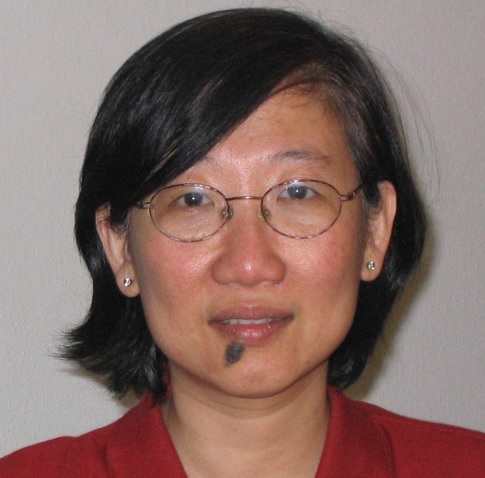
Mooi Choo Chuah (IEEE Fellow)
Professor, Lehigh University, USA
Title:
Robust Mobile Healthcare System Design
Time: 10:00-10:30,
Tuesday, Feb. 16, 2016
Abstract:
With the emergence of powerful wearable sensors and mobile devices, use of mobile and wireless technologies to support various health related objectives (mhealth) has gained much momentum in the past few years. Mobile healthcare system has the potential of transforming health service offerings across the globe. In this talk, I will briefly describe the challenges which need to be considered in designing mobile healthcare systems e.g. design robust algorithms which can deal with noisy monitored data, energy-efficient scheme for correlating multimodal data, providing fine-grained access control for relevant healthcare professional or family members to access monitored data. I will also briefly describe some mobile healthcare related research we have done e.g. robust smartphone-based gait recognitions, hybrid conversation skill monitoring system for special need children.
Biography:
Dr. Mooi Choo Chuah is a professor in Computer Science & Engineering Department at Lehigh University. Before she joined Lehigh in 2004, she spent 12 years at Bell Laboratories, Homdel, New Jersey. While at Bell Laboratories, she contributed towards the design of Wireless LAN and Third Generation Cellular Network systems. Her work at Bell Laboratories (some with her colleagues) has resulted in her being awarded 62 US and 15 international patents. At Lehigh, she initially worked on designing networking protocols for disruption tolerant networks, mitigation schemes for distributed denial of service attacks. Her current research includes designing next generation content-centric networks, secure mobile healthcare systems, and network security. Her research work has been supported by DARPA, PITA, and NSF. She has published at numerous IEEE and ACM networking conferences and journals. She was the IEEE Infocom 2010 Technical Co-Chair and an associate editor of IEEE Transactions on Mobile Computing. She is a senior member of IEEE and ACM and an associate editor of IEEE Transactions on Parallel & Distributed Computing. She is a Fellow of IEEE.
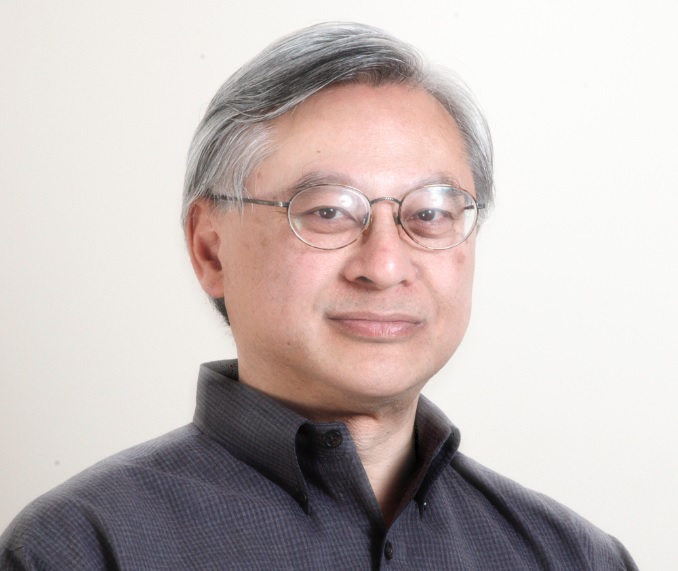
Vincent W. S. Chan (IEEE/OSA Fellow)
Joan and Irwin Jacobs Professor, MIT, USA
Title:
Frontiers in Networks
Time: 10:00-10:30,
Tuesday, Feb. 16, 2016
Abstract:
Future networks will increasingly become heterogeneous and networks and more highly tuned to achieve much better performance than current architectures (e.g. increase of ~1000 times in data rate even under extreme conditions such as high mobility). These networks will have multiple modalities (wired, wireless, satellite) with disparate channel properties, user rates that range from low to ultra-high (Tbps+) and a wide range of service requirements. Many new network problems that arise in future networks may not be served well by the ~50 year old Internet architecture even with constant evolutions. Increasingly the link layers are very dynamic in their adaptation to rapidly changing environments including both channel properties, achievable rates and offered traffic. When the networks go through a disruptive jump in rates and service quality in the future, they must be built with new innovations in network architectures to drive cost down to affordable levels. Linear extensions of old Internet packet switching architectures and techniques no longer will be the concept that can fully serve future applications. We will explore the properties of emerging applications and identify new architecture techniques and constructs that are based on scientific understandings and optimization of architectures. These techniques need to support new applications such as big data analytics, collaborative sensing and massive data networking in a manner that the network and applications will be aware of each other’s capabilities and available resources, and adaptively and jointly optimize application performance.
Biography:
Vincent W. S. Chan, the Joan and Irwin Jacobs Chair Professor of EECS, MIT, received his BS(71), MS(71), EE(72), and Ph.D.(74) degrees in EE all from MIT. From 1974 to 1977, he was an assistant professor, EE, at Cornell University. He joined MIT Lincoln Laboratory in 1977 and had been Division Head of the Communications and Information Technology Division until becoming the Director of the Laboratory for Information and Decision Systems (1999–2007) at MIT. He founded and is currently a member of the Claude E. Shannon Communication and Network Group at MIT’s Research Laboratory of Electronics of.
In July 1983, he initiated the Laser Intersatellite Transmission Experiment Program and in 1997, the follow-on GeoLITE Program. In 1989, he led the All-Optical-Network Consortium (1990-1997) formed among MIT, AT&T and the Digital Equipment Corporation. He also served as PI of the Next Generation Internet Consortium, ONRAMP (1998-2003) formed among AT&T, Cabletron, MIT, Nortel and JDS, and a Satellite Networking Research Consortium funded by NSF formed between MIT, Motorola, Teledesic and Globalstar. He has founded in 2009 and served as the Editor-in-Chief of the Journal of Optical Communications and Networking until 2012. He has served in many government advisory boards and is currently a Member of the Corporation of Draper Laboratory and was on the Board of Governors of the IEEE Communication Society as VP of Publications. He is an elected member of Eta-Kappa-Nu, Tau-Beta-Pi and Sigma-Xi, and the Fellow of the IEEE and the Optical Society of America.
Throughout his career, Professor Chan has spent his research focus on communication and networks, particularly on free space and fiber optical communication and networks and satellite communications. His work has led the way to the first successful ultra-high rate laser communication demonstration in space and early deployment of WDM optical networks. His recent research emphasis is on heterogeneous (satcom, wireless and fiber) network architectures with stringent performance demands.
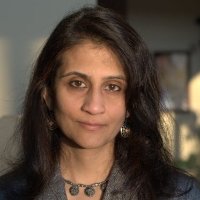
Monisha Ghosh (IEEE Fellow)
Research Professor, University of Chicago, USA
Title:
Can Wi-Fi and LTE Coexist Fairly in Unlicensed Spectrum?
Time: 10:00-10:30,
Thursday, Feb. 18, 2016
Abstract:
Unlicensed technologies, mainly Wi-Fi, and licensed cellular technologies, LTE being the latest, have both been enormously successful in their respective domains. However, the ever increasing demands of greater wireless capacity has led to innovative uses of these technologies beyond their original domains. Recent industry trends have moved towards the introduction of LTE, designed for operation over licensed spectrum where interference can be strictly controlled by the operator, into unlicensed spectrum where there is no interference protection by rule. Thus, fundamentally different system architectures: the scheduled, centralized system of LTE and the carrier sense collision avoidance protocol of Wi-Fi will need to coexist "fairly" in the unlicensed spectrum. This talk will provide an overview of recent developments in industry, highlight some of the pressing coexistence issues and propose some solutions that will ensure "fair" coexistence.
Biography:
Monisha Ghosh is currently a Research Professor at the University of Chicago researching next generation wireless systems. Previously she was a Principal Engineer at Interdigital, researching wireless technologies for 5G cellular and next generation Wi-Fi systems. Prior to this, she worked at Philips Research, Briarcliff Manor, and Bell Laboratories, Murray Hill, on various communication systems such as the HDTV broadcast standard, cable standardization and on cognitive radio for the TV White Spaces, and briefly in clinical informatics. She has been an active contributor to many industry standards and was recognized with a Certificate of Appreciation for her outstanding contributions to IEEE 802.22. Her research interests are broadly in the area of signal processing and communications. She received her Ph.D. in Electrical Engineering from the University of Southern California in 1991, and her B. Tech from the Indian Institute of Technology, Kharagpur in 1986. She is a Fellow of the IEEE.
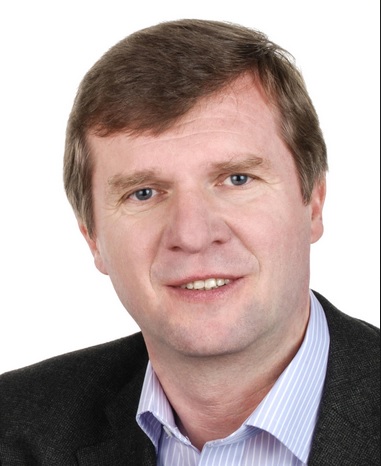
Sergei Gorlatch
Professor, University of Muenster, Germany
Title:
Future Distributed Applications Based on Mobile Cloud Computing
and Software-Defined Networks
Time: 17:00-17:30,
Tuesday, Feb. 16, 2016
Abstract:
We consider an emerging class of challenging networked applications called Real-Time Online Interactive Applications (ROIA). ROIA are networked applications connecting a potentially very high number of users who interact with the application and with each other in real time, i.e., a response to a user’s action happens virtually immediately. Typical representatives of ROIA are multiplayer online computer games, advanced simulation-based e-learning and serious gaming. All these applications are characterized by high performance and QoS requirements, such as: short response times to user inputs (about 0.1-1.5 s); frequent state updates (up to 100 Hz); large and frequently changing numbers of users in a single application instance (up to tens of thousands simultaneous users).
This talk will address two challenging aspects of future Internet-based ROIA applications: a) using Mobile Cloud Computing for allowing high application performance when a ROIA application is accessed from multiple mobile devices, and b) managing dynamic QoS requirements of ROIA applications by employing the emerging technology of Software-Defined Networking (SDN).
Biography:
Prof. Sergei Gorlatch is an internationally acknowledged expert in the area of algorithms, architectures, software and applications for modern and emerging computer and networked systems. Sergei Gorlatch has been Full Professor of Computer Science at the University of Muenster (Germany) since 2003. Earlier he was Associate Professor at the Technical University of Berlin, Assistant Professor at the University of Passau, and Humboldt Research Fellow at the Technical University of Munich, all in Germany.
Prof. Gorlatch has about 200 peer reviewed publications in renowned international books, journals and conferences. He is often delivering invited talks at international conferences and serves at their program committees. Prof. Gorlatch was principal investigator in several international research and development projects in the field of parallel, distributed, Grid and Cloud algorithms and computing, as well as e-Learning, funded by the European Commission and by German national bodies. Among his recent achievements in the area of data management, communications and future internet is the novel Real-Time Framework (www.real-time-framework.com) developed in his group as a platform for high-level development of real-time, highly interactive applications like multi-player online games, advanced e-Learning, crowd simulations, etc. In the area of high-performance computing, his group has been recently developing a high-level SkelCL library (skelcl.uni-muenster.de/) for efficient programming of parallel algorithms on emerging parallel and distributed many-core systems with accelerators.

Zhu Han (IEEE Fellow)
Associate Professor, University of Houston, USA
Title:
Users Association in Small Cell Networks with Massive MIMO
Time: 17:00-17:30,
Tuesday, Feb. 16, 2016
Abstract:
In this talk, we discuss the recent advance in 5G cellular networks, and concentrate on two specific topics: small cell and massive MIMO. Then we study how the resource allocation should be conducted under those network scenarios. Specifically, the macrocell base station (BS) as well as femtocell access points (FAPs) are equipped with a very large number of antennas. Each mobile user will attempt to connect to the BS or FAPs. However, it is assumed that the users may be biased to connect to FAPs rather than the BS. A resource allocation problem is formulated to find the optimal bias that maximizes the total system capacity while keeping the transmitted power from the BS and the FAPs within a certain limit. An algorithm for solving the optimization problem is proposed and numerical results are presented to illustrate how deploying massive MIMO can affect the optimal bias value and the total capacity. In addition, the performance of our proposed scheme is evaluated when using different precoding schemes.
Biography:
Zhu Han received the B.S. degree in electronic engineering from Tsinghua University, in 1997, and the M.S. and Ph.D. degrees in electrical engineering from the University of Maryland, College Park, in 1999 and 2003, respectively. From 2000 to 2002, he was an R&D Engineer of JDSU, Germantown, Maryland. From 2003 to 2006, he was a Research Associate at the University of Maryland. From 2006 to 2008, he was an assistant professor in Boise State University, Idaho. Currently, he is a Professor in Electrical and Computer Engineering Department as well as Computer Science Department at the University of Houston, Texas. His research interests include wireless resource allocation and management, wireless communications and networking, game theory, wireless multimedia, security, and smart grid communication. Dr. Han received an NSF Career Award in 2010, the Fred W. Ellersick Prize of the IEEE Communication Society in 2011, the EURASIP Best Paper Award for the Journal on Advances in Signal Processing in 2015, several best paper awards in IEEE conferences, and is currently an IEEE Communications Society Distinguished Lecturer.
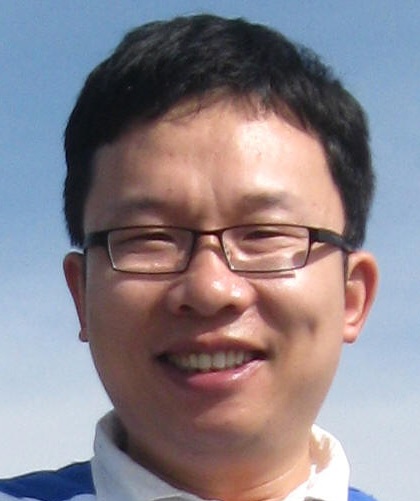
Tian He
Associate Professor, University of Minnesota, USA
Title:
Cross-Technology Wireless Communication
Time: 17:00-17:30,
Wednesday, Feb. 17, 2016
Abstract:
This talk presents FreeBee, which enables direct communication among three popular wireless technologies: WiFi, ZigBee, and Bluetooth. The design aims not only to address cross-technology inference (CTI) in ISM bands, but also to shed the light on the opportunities that cross-technology cooperation has to offer in smart spaces and mobile environments. The key concept of FreeBee is to modulate symbol messages by shifting the timing of periodic beacon frames already mandatory for wireless standards without incurring extra traffic. Such a design consumes zero additional bandwidth, allowing continuous broadcast to safely reach mobile and/or duty-cycled devices. A new interval multiplexing technique is proposed to enable concurrent broadcasts from multiple senders or boost the transmission rate of a single sender. On top of the basic FreeBee design, we discuss a few promising future directions on building opportunistic cross-technology communication with regular data traffic.
Biography:
Dr. Tian He is currently an associate professor in the Department of Computer Science and Engineering at the University of Minnesota-Twin Cities. Dr. He is the author and co-author of over 200 papers in premier wireless network journals and conferences with over 16,000 citations (H-index 52). Dr. He is the recipient of the George W. Taylor Distinguished Research Award, NSF CAREER Award, McKnight Land-Grant Professorship, and five best paper awards. Dr. He served a few general/program chair positions in international conferences and on many program committees, and also currently serves as an editorial board member for six international journals including ACM Transactions on Sensor Networks and IEEE Transaction on Computers. His research includes wireless sensor networks, intelligent transportation systems, real-time embedded systems and distributed systems, supported by National Science Foundation, IBM, Microsoft and other agencies.

S. S. Iyengar (EAS Member, IEEE/ACM/AAAS/SDPS Fellow)
Ryder Professor and Director, Florida International
University, USA
Title:
Oblivious Network Routing: Algorithms and Applications
Time: 10:30-11:00,
Tuesday, Feb. 16, 2016
Abstract:
World-wide advances in transportation and telecommunications infrastructure have significantly hanged human life for the last decades. As a result, we see an increasing exchange of national and international resources in today's world which has turned our planet into a global village. The internet is an example which characterizes an interconnection of things. This talk presents a unique way of communication and cooperation by passing information flows and contents through various paths within a given network. This oblivious network routing is an important characterization of such transformation of information from one mode to another. The talk presents a network developed by authors which is very unique and fundamental to the internet applications.
Biography:
Professor S. S. Iyengar is the Director of Research at NuLogix Inc. in New Jersey and he is also on the Board of Directors for many Startup companies. He is currently the Ryder Professor and Director of the School of Computing and Information Science in Florida International University. Dr. Iyengar, a computer scientist of international repute, is a pioneer in the field of distributed sensor networks. Iyengar is the founding Editor-In-Chief of the International Journal of Distributed Sensor Networks and has been an Associate Editor for IEEE Transactions on Computers, IEEE Transactions on Data and Knowledge Engineering, and guest Editor of IEEE Computer Magazine. He has been an editorial member of many IEEE journals in advisory roles. Iyengar is a Member of the European Academy of Sciences, a Fellow of the Institute of Electrical and Electronics Engineers (IEEE), a Fellow of the Association of Computing Machinery (ACM), a Fellow of the American Association for the Advancement of Science (AAAS), and Fellow of the Society for Design and Process Science (SDPS). He has received the Distinguished Alumnus Award of the Indian Institute of Science. In 1998, he was awarded the IEEE Computer Society's Technical Achievement Award and is an IEEE Golden Core Member. Professor Iyengar is an IEEE Distinguished Visitor, SIAM Distinguished Lecturer, and ACM National Lecturer. His innovative work called the Brooks-Iyengar algorithm has been used in LINUX operating systems for isolation of errors, and by Raytheon, Boeing, BBN and various other industries.
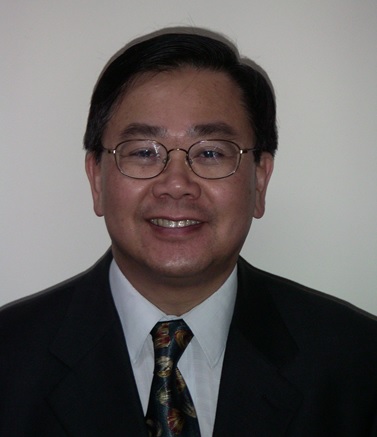
Victor C.M. Leung (IEEE/RSC/EIC/CAE Fellow)
TELUS Mobility Research Chair Professor, The University
of British Columbia, Canada
Title:
Green Internet of Things
Time: 16:30-17:00,
Tuesday, Feb. 16, 2016
Abstract:
The Internet of Things (IoT) extends the Internet to connect not only computers and smart devices carried by people, but “things” with embedded sensors, actuators, and networking capabilities. IoT will enable many new services and applications such as smart grids, intelligent transportation, e-health, smart homes/buildings/offices/factories, which will be an integral part of the future smart cities. Of particular interest are applications that contribute to the global efforts towards a greener society by reducing energy consumption, shortening travel times, etc. In many applications, IoT will employ embedded radios and wireless machine-to-machine communications to enable ubiquitous connectivity anywhere any time. Many smart devices with embedded radios are battery operated, and in many situations battery replacement may be awkward if not impossible. Regardless of the power source, with deployment of billions of devices anticipated, global power consumption of IoT may become considerable. Therefore in the continued development of IoT, it is inevitable that energy efficiency becomes an important part of the research agenda towards “green IoT”. In this presentation, we shall give an overview of IoT for smart grids, smart transportation, e-health, smart buildings and smart cities, and examine how IoT contributes to a greener society. We shall also highlight some of our recent research results on utilizing the powerful computation capacity of cloud computing to enable green IoT. Open problems and future research directions will be discussed.
Biography:
Victor C. M. Leung is a Professor and the holder of the TELUS Mobility Research Chair in Advanced Telecommunications Engineering in the Department of Electrical and Computer Engineering, the University of British Columbia. His research interests are in the areas of wireless networks and mobile systems. He has co-authored more than 800 technical papers in international journals and conference proceedings, in addition to a number of edited books and book chapters in these areas. Several of his papers have been selected for best paper awards.
Dr. Leung is a registered professional engineer in the Province of British Columbia, Canada. He is a Fellow of IEEE, the Royal Society of Canada, the Engineering Institute of Canada, and the Canadian Academy of Engineering. He was a Distinguished Lecturer of the IEEE Communications Society. He has served on the editorial boards of the IEEE Journal on Selected Areas in Communications – Wireless Communications Series, the IEEE Transactions on Computers, Wireless Communications, and Vehicular Technology, and currently serves on the editorial boards of the IEEE Journal on Selected Areas in Communications Series on Green Communications and Networking, IEEE Wireless Communications Letters, Computer Communications, as well as several other journals. He has guest-edited many journal special issues, and provided leadership to the technical program committees and organizing committees of many international conferences. Dr. Leung is a winner of the IEEE Vancouver Section Centennial Award and the 2011 UBC Killam Research Prize.
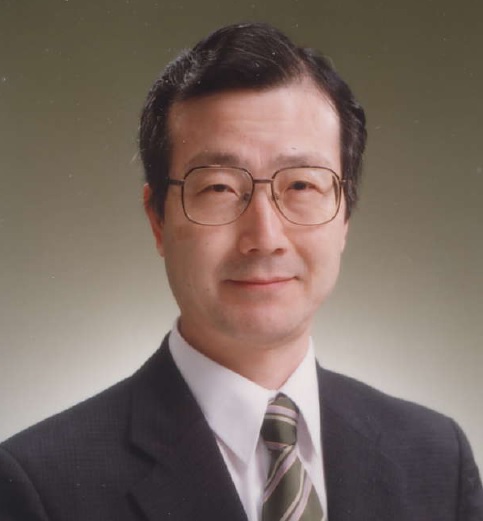
Kenichi Mase (IEEE/IEICE Fellow)
Professor Emeritus, Niigata University, Japan
Title: Creation of
Information & Communication Services based on Intelligent Transport
System
Time: 10:30-11:00,
Thursday, Feb. 18, 2016
Abstract:
An overview on Intelligent Transfer System (ITS) evolution is presented. Use of ITS for creating infomation & communication services is discussed. A survey of position-based routing in vehicular ad hoc networks is presented. Several examples including video monitoring system using space on roads, environmental sensing using driven vehicles, and disaster surveillance and emergency communication systems using unmanned aerial vehicles are shown together with preliminary research works and experimental results.
Biography:
Kenichi Mase received the B. E., M. E., and Dr. Eng. Degrees in Electrical Engineering from Waseda University, Tokyo, Japan, in 1970, 1972, and 1983, respectively. He was Executive Manager, Communications Assessment Laboratory, NTT Multimedia Networks Laboratories from 1996 to 1998. He is now Professor Emeritus, Niigata University, Niigata, Japan. He received IEICE Best Paper Award in 1994, Best Letter Award in 2014, Achievement Award in 2014. the Telecommunications Advanced Foundation Award in 1998, IEEE CQR Chairman's Award in 2010, and Best Paper Award, Internatioal Academy, Research, and Industry Association in 2013. His research interests include communications network design and traffic control, quality of service, mobile ad hoc networks and wireless mesh networks. He was President of IEICE-CS in 2008 and Vice President of IEICE in 2011 and 2012. He is an IEEE and IEICE Fellow.

Marco
Di Renzo
CNRS Associate Professor,
Paris-Saclay
University,
France
Title:
On System-Level Analysis & Design of Heterogeneous Ultra Dense Cellular
Networks: The Magic of Stochastic Geometry and the Renaissance of Communication
Theory
Time:
11:30-12:00, Tuesday, Feb. 16,
2016
Abstract:
The fifth-generation (5G) is coming. Quo vadis 5G? What architectures, network topologies and technologies will define 5G? Are the methodologies to the analysis, design and optimization of current cellular networks still applicable to 5G? This talk is aimed to discuss the critical and essential importance of spatial models for an accurate system-level analysis and optimization of emerging 5G ultra-dense and heterogeneous cellular networks, which are expected to rely on a much denser deployment of access points, to a scale that has never been observed in the past. Due to the increased heterogeneity and deployment density, in particular, new flexible and scalable approaches for modeling, simulating, analyzing and optimizing cellular networks are needed. Recently, a new approach has been proposed: it is based on the theory of point processes and it leverages tools from stochastic geometry for tractable system-level modeling, performance evaluation and optimization.
In this talk, we investigate the accuracy of this emerging abstraction for modeling cellular networks, by explicitly taking realistic base station locations, building footprints, spatial blockages and antenna radiation patterns into account. More specifically, the base station locations and the building footprints are taken from two publicly available databases from the United Kingdom. Our study confirms that an abstraction model based on stochastic geometry is capable of accurately modeling the communication performance of cellular networks in dense urban environments.
Furthermore, the audience will be introduced to the concept of computational stochastic geometry and to how the mathematical potential of stochastic geometry can be leveraged to an affordable computational complexity, yet retaining its accuracy and capability of modeling practical 5G communication networks. The potential of stochastic geometry for modeling and analyzing cellular networks will be investigated for application to several emerging case studies, including massive MIMO, mmWave communication, and wireless power transfer.
Biography:
Marco Di Renzo is a first-class-honors graduate of the University of L’Aquila, where he received the Ph.D. degree in 2007. In 2013, he received the French Habilitation degree from University Paris-Sud XI, France. Since 2010, he has been with the Laboratory of Signals and Systems of Paris-Saclay University, France, where he is a Tenured Chargé de Recherche CNRS (CNRS Associate Professor). He is a Distinguished Visiting Fellow of the Royal Academy of Engineering, UK. He is a co-founder of the university spin-off company WEST Aquila s.r.l. He has held various research and academic positions in Italy, in USA at Virginia Tech, in Spain at CTTC, in the UK at the University of Edinburgh. He is a Principal Investigator of seven European-funded research projects. His main research interests are in the field of wireless communication and communication theory. He is an author of 200+ journal and conference papers, which have received various awards, including the Best Paper Awards at IEEE-CAMAD, IEEE-VTCfall, IEEE-ATC, the Network of Excellence NEWCOM# Best Paper Award, and the IEEE-COMSOC Best Young Researcher Award for Europe, Middle East and Africa (EMEA Region). Currently, he serves as an Editor of the IEEE COMMUNICATIONS LETTERS and of the IEEE TRANSACTIONS ON COMMUNICATIONS, where is the Editor for Heterogeneous Networks Modeling and Analysis of IEEE-COMSOC. He is a Senior Member of IEEE-COMSOC, a Member of the European Association for Communications and Networking (EURACON), and a Member of Faculty Row-America’s Top Professors.
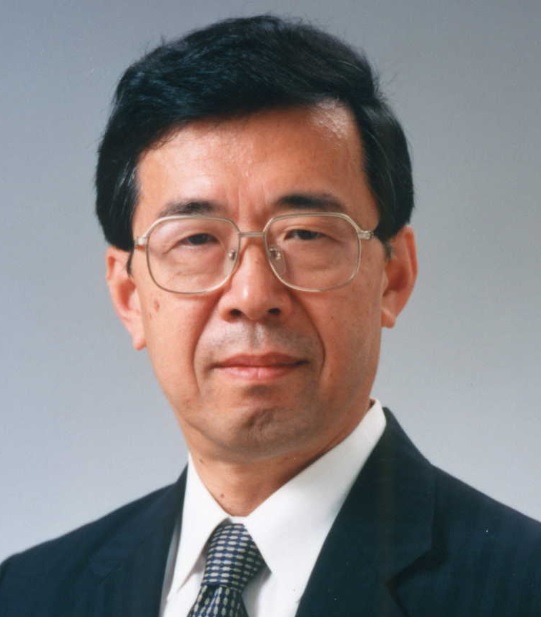
Toshitaka Tsuda (IEEE/IEICE Fellow)
Professor, Waseda University, Japan
Title:
Consideration on Future Network - Towards Realization of Real ICT
Time: 16:00-16:30,
Tuesday, Feb. 16, 2016
Abstract:
These days, the environment around communication network is changing rapidly. Main traffic is moving form telephone and mail to video, and the IoT traffic is expected to become one of the major traffics. The nature and usage patterns are very different to each other, and the R&D activities are going on trying to realize new network architecture to efficiently accommodate the traffics. ICN(Information Centric Network) is of the promising architecture, and we are the one who is carrying out an intensive study. We are taking a service oriented R&D, and did the field trial of the proactive caching system which provide comfortable video services to commuter train users based on NDN. Currently, our focus is on IoT services. Majority of current approaches are to carry out information processing at Data center, and the role of networks is just efficient data transmission. This is seen as separated IT and Communication. Trying to make a network fit to the IoT services, we are intending to introduce a in-network information processing by using the basic mechanisms and concepts of NDN, which is in the same direction of Service Centric Networking and Named Function Network proposed. This is the approach to realize real ICT(Information and Communication Technology). In my talk, I will introduce some considerations on the future network, and our service oriented R&D work.
Biography:
Dr. Toshitaka Tsuda received BS, MS, and PhD degrees in electrical engineering from the University of Tokyo in 1970, 1972 and 1975, respectively. He joined Fujitsu Laboratories Ltd. in 1975, where he engaged in R&D of digital signal processing, micro-processor architecture, video coding, ISDN transmission, optical communication, packet switching, and network architecture. In Fujitsu Laboratories, he worked as Senior Vice President, Member of the Board, Managing Director of Fujitsu Laboratories of Europe, and Chairman of the Board of Fujitsu Laboratories of America. 2012-2015 he was a Professor of Waseda University, and currently a guest professor of Waseda University, an associate Member of Science Council of Japan, and the president of ICN consortium of Japan. He is a Fellow of IEEE, an Honorary member and Fellow of Institute of Electrical Information and Communication Engineers (IEICE), past Chairman of IEEE Tokyo Section, and former President of IEICE. He made several keynote speeches, ICC2011 and NOMS2012 being the examples.

Rodney S. Tucker (IEEE/OSA/AAS/AATSE Fellow)
Professor, University of Melbourne, Australia
Title:
How to Build a Green Internet
Time: 16:00-16:30,
Tuesday, Feb. 16, 2016
Abstract:
The world’s cyber infrastructure consumes a small but growing fraction of the global electricity supply. The main consumers of energy are data centers and the global Internet. The total energy consumption of cyber infrastructure is currently dominated by Internet access networks, both wired and wireless. However, the fraction of total energy consumed by routers and switches in the network and by servers in data centres is rising. Servers in data centres could eventually dominate. In this talk, I will examine the key contributors to energy consumption in the Internet and cloud computing, and examine some approaches that will assist in building more energy-efficient infrastructure.
Biography:
Rod Tucker is an Emeritus Professor at the University of Melbourne. He served on a government-appointed panel of experts that advised on the establishment of a national broadband fiber-based access network in Australia. He is a Fellow of the IEEE, the Optical Society of America, the Australian Academy of Science, and the Australian Academy of Technological Sciences and Engineering. He has previously held positions at the Plessey Company, AT&T Bell Laboratories, Hewlett Packard Laboratories, and Agilent Technologies. Rod was Founding Director of the University of Melbourne’s Centre for Energy-Efficient Telecommunications (CEET).
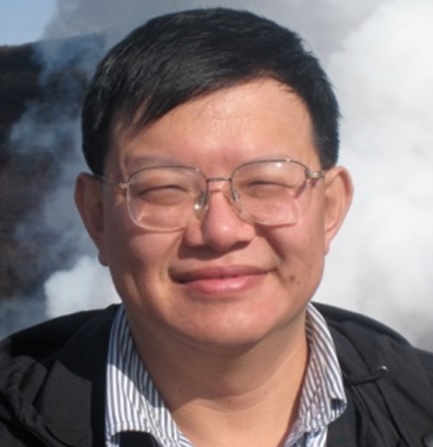
Li-Chun Wang (IEEE Fellow)
Professor and Chairman,
National Chiao Tung University, Taiwan
Title: Modeling and
Analysis of Co-Existing Multiple Radio Access Technologies in
Heterogeneous Wireless Networks
Time: 11:00-11:30, Tuesday, Feb. 16, 2016
Abstract:
In this talk, we present an analytical framework for evaluating the performance of co-existing multiple radio access technologies (RAT) taking into account of the inter-cell interference from the same network as well as other heterogeneous networks (HetNet), the effects of various kinds of multiple access link layer protocols, and the functions of user-cell association algorithms.
Stochastic geometry (SG) is applied in the proposed analytical framework to analyze the performance of multi-tier heterogeneous ultra-dense small cells, and 3GPP long-term evaluation – unlicensed (LTE-U). The proposed analytical framework can provide the important insights into the design of small cell managements in HetNet. We will introduce many important concepts, such as void probability, and energy-efficient cell association from the holistic viewpoint of energy efficiency and spectrum efficiency, and overall of load balancing of multi-RAT systems. Last, we well highlight some research directions for modeling, analysis and design for the co-existing multi-RAT systems in HetNet.
Biography:
Li-Chun Wang (M'96 -- SM'06 -- F'11) received the B.S. degree from National Chiao Tung University, Taiwan, R. O. C. in 1986, the M.S. degree from National Taiwan University in 1988, and the Ms. Sci. and Ph. D. degrees from the Georgia Institute of Technology , Atlanta, in 1995, and 1996, respectively, all in electrical engineering.
From 1990 to 1992, he was with the Telecommunications Laboratories of Chunghwa Telecom Co. In 1995, he was affiliated with Bell Northern Research of Northern Telecom, Inc., Richardson, TX. From 1996 to 2000, he was with AT&T Laboratories, where he was a Senior Technical Staff Member in the Wireless Communications Research Department. Since August 2000, he has joined the Department of Electrical and Computer Engineering of National Chiao Tung University in Taiwan and is the current Chairman of the same department. His current research interests are in the areas of radio resource management and cross-layer optimization techniques for wireless systems, heterogeneous wireless network design, and cloud computing for mobile applications.
Dr. Wang won the Distinguished Research Award of National Science Council, Taiwan in 2012, and was elected to the IEEE Fellow grade in 2011 for his contributions to cellular architectures and radio resource management in wireless networks. He was a co-recipient(with Gordon L. Stuber and Chin-Tau Lea) of the 1997 IEEE Jack Neubauer Best Paper Award for his paper ``Architecture Design, Frequency Planning, and Performance Analysis for a Microcell/Macrocell Overlaying System," IEEE Transactions on Vehicular Technology, vol. 46, no. 4, pp. 836-848, 1997. He has published over 200 journal and international conference papers. He served as an Associate Editor for the IEEE Trans. on Wireless Communications from 2001 to 2005, the Guest Editor of Special Issue on "Mobile Computing and Networking" for IEEE Journal on Selected Areas in Communications in 2005, "Radio Resource Management and Protocol Engineering in Future Broadband Networks" for IEEE Wireless Communications Magazine in 2006, and “Networking Challenges in Cloud Computing Systems and Applications,” for IEEE Journal on Selected Areas in Communications in 2013, respectively. He is holding 10 US patents.

Yang Xiang
Professor and Associate Head, Deakin University,
Australia
Title:
Application of Data Analytics: Security and Privacy in Social Networks
Time: 11:30-12:00,
Tuesday, Feb. 16, 2016
Abstract:
Today's online social networks have pervaded all aspects of our daily lives. With their unparalleled popularity, online social networks have evolved from the platforms for social communication and news dissemination, to indispensable tools for professional networking, social recommendations, marketing, and online content distribution. Their evolution has influenced every technological, societal, and cultural aspect of human beings. They are receiving more and more attention in research communities.
It has been widely recognized that security and privacy are the critical issues in online social networks. On one hand, online social networks have been the effective platform for the attackers to launch attacks and distribute malicious information. On the other hand, privacy leakage through online social networks has become common exercise. New methods and tools, consequently, must follow up in order to adapt to this emerging security paradigm. In this talk, we will discuss the security and privacy problems in social networks and how big data analytics can be used to address the problems.
Biography:
Professor Yang Xiang received his PhD in Computer Science from Deakin University, Australia. He is currently a full professor at School of Information Technology, Deakin University. He is the Director of the Network Security and Computing Lab (NSCLab) and the Associate Head of School (Industry Engagement). His research interests include network and system security, distributed systems, and networking. In particular, he is currently leading his team developing active defense systems against large-scale distributed network attacks. He is the Chief Investigator of several projects in network and system security, funded by the Australian Research Council (ARC). He has published more than 200 research papers in many international journals and conferences, such as IEEE Transactions on Computers, IEEE Transactions on Parallel and Distributed Systems, IEEE Transactions on Information Security and Forensics, and IEEE Journal on Selected Areas in Communications. Two of his papers were selected as the featured articles in the April 2009 and the July 2013 issues of IEEE Transactions on Parallel and Distributed Systems. Two of his papers were selected as the featured articles in the Jul/Aug 2014 and the Nov/Dec 2014 issues of IEEE Transactions on Dependable and Secure Computing. He has published two books, Software Similarity and Classification (Springer) and Dynamic and Advanced Data Mining for Progressing Technological Development (IGI-Global). He has served as the Program/General Chair for many international conferences such as SocialSec 15, IEEE DASC 15/14, IEEE UbiSafe 15/14, IEEE TrustCom 13, ICA3PP 12/11, IEEE/IFIP EUC 11, IEEE TrustCom 13/11, IEEE HPCC 10/09, IEEE ICPADS 08, NSS 11/10/09/08/07. He has been the PC member for more than 60 international conferences in distributed systems, networking, and security. He serves as the Associate Editor of IEEE Transactions on Computers, IEEE Transactions on Parallel and Distributed Systems, Security and Communication Networks (Wiley), and the Editor of Journal of Network and Computer Applications. He is the Coordinator, Asia for IEEE Computer Society Technical Committee on Distributed Processing (TCDP). He is a Senior Member of the IEEE.
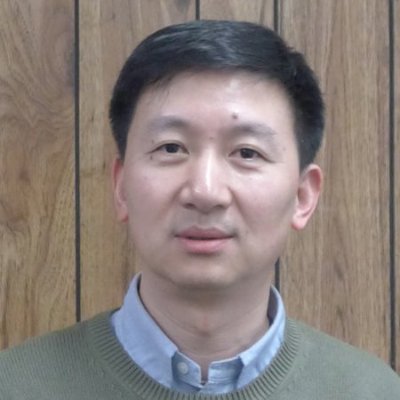
Yudong Yao (IEEE Fellow)
Professor and Department Director, Stevens
Institute of Technology, USA
Title:
Identification of Cognitive Radio Terminals and Malicious Users
Time: 17:30-18:00,
Wednesday, Feb. 17, 2016
Abstract:
Cognitive radio is a promising technology for improving spectrum utilization and providing opportunities for new and advanced wireless services. Challenging research issues in cognitive radio include spectrum sensing and network security. This presentation reports recent research activities and results in cooperative spectrum sensing, classification and identification of cognitive radio terminals using machine learning algorithms, and techniques for countering malicious users and attacks.
Biography:
Yu-Dong Yao received the B.Eng. and M.Eng. degrees from Nanjing University of Posts and Telecommunications, Nanjing, China, in 1982 and 1985, respectively, and the Ph.D. degree from Southeast University, Nanjing, China, in 1988, all in electrical engineering. He was a visiting student at Carleton University, Ottawa, Canada, in 1987 and 1988. He has been with Stevens Institute of Technology, Hoboken, New Jersey, since 2000 and is currently a professor and department director of electrical and computer engineering. He is also a director of Stevens' Wireless Information Systems Engineering Laboratory (WISELAB). Previously, from 1989 to 1990, he was at Carleton University, as a Research Associate working on mobile radio communications. From 1990 to 1994, he was with Spar Aerospace Ltd., Montreal, Canada, where he was involved in research on satellite communications. From 1994 to 2000, he was with Qualcomm Inc., San Diego, CA, where he participated in research and development in wireless code-division multiple-access systems.
Dr. Yao has been active in a nonprofit organization, WOCC, Inc., which promotes wireless and optical communications research and technical exchange. He served as WOCC president (2008-2010) and chairman of the board of trustees (2010-2012).
He holds one Chinese patent and thirteen U.S. patents. His research interests include wireless communications and networks, spread spectrum and CDMA, antenna arrays and beamforming, cognitive and software defined radio (CSDR), and digital signal processing for wireless systems. Dr. Yao was an Associate Editor of IEEE Communications Letters (2000-2008) and IEEE Transactions on Vehicular Technology (2001-2006), and an Editor for IEEE Transactions on Wireless Communications (2001-2005). He was elected an IEEE Fellow in 2011 for his contributions to wireless communications systems. In 2013, he received the Advancement of Invention Award from New Jersey Inventors Hall of Fame. Dr. Yao is an IEEE ComSoc Distinguished Lecturer (2015-2016).

Wei Yu (IEEE Fellow)
Professor and Canada Research Chair, University of
Toronto, Canada
Title:
A Stochastic Analysis of Network MIMO Systems
Time: 16:30-17:00,
Wednesday, Feb. 17, 2016
Abstract:
Network MIMO, where base-stations (BSs) cooperatively transmit and receive to/from the users, promises to significantly alleviate the inter-cell interference problem in wireless cellular networks; but its analytical performance characterization is still a difficult open problem. In this talk, we describe a stochastic geometry analysis of a network MIMO system, where the multiple-antenna BSs are distributed according to a Poisson point process and cooperate using zero-forcing beamforming to serve multiple users. We obtain tractable and accurate approximations of the signal power and inter-cluster interference power distributions, and derive a computationally efficient expression for the achievable per-BS ergodic sum rate. The analysis enables us to obtain the optimal number of users to schedule and to quantify the performance improvement of network MIMO systems as a function of the cooperating cluster size. We show that due to the zero-forcing penalty across a distributed set of BSs and the inevitable out-of-cluster interference that always exists, the per-BS ergodic sum rate of a network MIMO system does not approach that of an isolated cell even at unrealistically large cluster sizes. Finally, we illustrate the benefit of user-centric clustering for cell-edge users, and remark on a comparison between massive MIMO and network MIMO systems and a tradeoff between spatial multiplexing and interference nulling.
Biography:
Wei Yu (S'97-M'02-SM'08-F’14) received the B.A.Sc. degree in Computer Engineering and Mathematics from the University of Waterloo, Waterloo, Ontario, Canada in 1997 and M.S. and Ph.D. degrees in Electrical Engineering from Stanford University, Stanford, CA, in 1998 and 2002, respectively. Since 2002, he has been with the Electrical and Computer Engineering Department at the University of Toronto, Toronto, Ontario, Canada, where he is now Professor and holds a Canada Research Chair (Tier 1) in Information Theory and Wireless Communications. His main research interests include information theory, optimization, wireless communications and broadband access networks.
Prof. Wei Yu currently serves on the IEEE Information Theory Society Board of Governors (2015-17). He is an IEEE Communications Society Distinguished Lecturer (2015-16). He served as an Associate Editor for IEEE Transactions on Information Theory (2010-2013), as an Editor for IEEE Transactions on Communications (2009-2011), as an Editor for IEEE Transactions on Wireless Communications (2004-2007), and as a Guest Editor for a number of special issues for the IEEE Journal on Selected Areas in Communications and the EURASIP Journal on Applied Signal Processing. He was a Technical Program co-chair of the IEEE Communication Theory Workshop in 2014, and a Technical Program Committee co-chair of the Communication Theory Symposium at the IEEE International Conference on Communications (ICC) in 2012. He was a member of the Signal Processing for Communications and Networking Technical Committee of the IEEE Signal Processing Society (2008-2013). Prof. Wei Yu received a Steacie Memorial Fellowship in 2015, an IEEE Communications Society Best Tutorial Paper Award in 2015, an IEEE ICC Best Paper Award in 2013, an IEEE Signal Processing Society Best Paper Award in 2008, the McCharles Prize for Early Career Research Distinction in 2008, the Early Career Teaching Award from the Faculty of Applied Science and Engineering, University of Toronto in 2007, and an Early Researcher Award from Ontario in 2006. He was named a Highly Cited Researcher by Thomson Reuters in 2014.
Prof. Wei Yu is a Fellow of IEEE. He is a registered Professional Engineer in Ontario.

Michele Zorzi (IEEE Fellow)
Professor, University of Padova, Italy
Title: COBANETS: A
New Paradigm for Cognitive Communications Systems
Time: 11:00-11:30, Tuesday, Feb. 16, 2016
Abstract:
In response to the new challenges in the design and operation of communication networks, and taking inspiration from how living beings deal with complexity and scalability, in this position paper we introduce an innovative system concept called COgnition-BAsed NETworkS (COBANETS). The proposed approach develops around the systematic application of advanced machine learning techniques and, in particular, unsupervised deep learning and probabilistic generative models for system-wide learning, modeling, optimization, and data representation. Moreover, in COBANETS we propose to combine the learning architecture with the emerging network virtualization paradigms, which make it possible to actuate automatic optimization and reconfiguration strategies at the system level, thus fully unleashing the potential of the learning approach. Compared to past and current research efforts in this area, the technical approach depicted in this paper is deeply interdisciplinary and more comprehensive, calling for the synergic combination of expertise of computer scientists, communications and networking engineers, and cognitive scientists, with the ultimate aim of breaking new ground through a profound rethinking of how the modern understanding of cognition can be used in the management and optimization of telecommunication networks.
Biography:
Michele Zorzi was born in Venice, Italy, on December 6th, 1966. He received the Laurea Degree and the Ph.D. in Electrical Engineering from the University of Padova, Italy, in 1990 and 1994, respectively. During the Academic Year 1992/93, he was on leave at the University of California, San Diego (UCSD), attending graduate courses and doing research on multiple access in mobile radio networks. In 1993, he joined the faculty of the Dipartimento di Elettronica e Informazione, Politecnico di Milano, Italy. After spending three years with the Center for Wireless Communications at UCSD, in 1998 he joined the School of Engineering of the University of Ferrara, Italy, where he became a Professor in 2000. Since November 2003, he has been on the faculty at the Information Engineering Department of the University of Padova. His present research interests include performance evaluation in mobile communications systems, random access in mobile radio networks, ad hoc and sensor networks, energy constrained communications protocols, and broadband wireless access.
Dr. Zorzi was the Editor-In-Chief of the IEEE Wireless Communications Magazine in 2003--2005, is currently the Editor-In-Chief of the IEEE Transactions on Communications, and serves on the Editorial Boards of the IEEE Transactions on Wireless Communications, the Wiley Journal of Wireless Communications and Mobile Computing and the ACM/URSI/Kluwer Journal of Wireless Networks. He was also guest editor for special issues in the IEEE Personal Communications Magazine ("Energy Management in Personal Communications Systems," Jun. 1998) and the IEEE Journal on Selected Areas in Communications ("Multi-media Network Radios," May 1999, and "Underwater Wireless Communications and Networks," to be published in 2008). He is a Fellow of the IEEE.